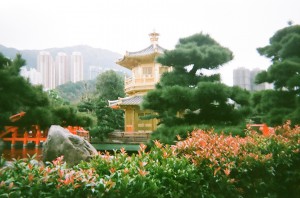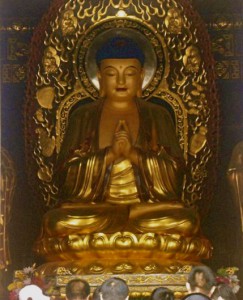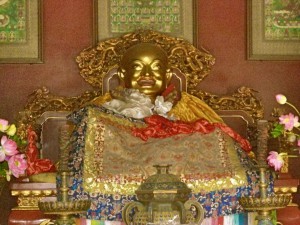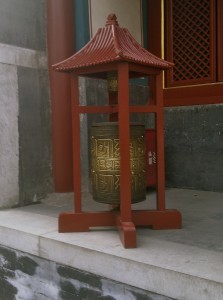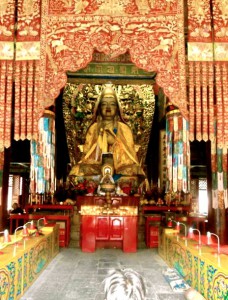Posted by RMA Teen Shireen Khan
This past March, I had the great opportunity to visit China with a group of students from my high school. Within 10 days this group did everything from exploring a Buddhist Botanical Garden in Hong Kong to rickshaw-ing the Hutong neighborhoods of Beijing. The experience left a lasting impression on me and I found myself being able to use everything I had learned at the Rubin to enhance that experience.
China is, above all, clearly booming economically and progressing towards a fruitful future. Our tour guide joked that the iron crane has become the national bird of China; every town is being renovated, re-imagined, and expanded. Buildings are going up everywhere. At the same time, however, (and this was especially true of the coastal sovereign state of Hong Kong), the spirituality of the people remains not only intact but also extremely visible, even in modern contexts. For example, we saw one building in the Kowloon (means “9 dragons”; named after the 8 mountains surrounding the region and the emporer who is always the 9th dragon) region of Hong Kong that had a square shaped hole about 1/5th of its size at its center. It seemed odd and almost useless from an architectural/utilitarian perspective. Our tour guide explained, however, that the hole existed for Feng Shui reasons and because it is rumored that blocking any of the hills from view is bad luck; it angers the dragons. Through this hole, the summit of the hill behind it is visible. It is also rumored that the summits, the backs of the dragons, move when no one is watching. I wonder if this duality, this sense of balance, this incorporation of the old within the new is rooted in the ying yang philosophies of Taoism and the harmony between opposites that Buddhism celebrates. I had just seen an exhibit at the Rubin before leaving for China called “Grain of Emptiness,” which celebrated contemporary woks and inspired a discussion at RMA Teens about emptiness and fullness and the way in which the two can’t work without each other. As we continue to create our Zine this year, the theme of Opposites has become a very important one and appropriately so, it seems.
But incorporation doesn’t stop there. The “incorporation” I experienced in China also worked with religions. When visiting the Temple of Heaven in Beijing, people of all religions and non-religions had come to explore the area and worship whomever they please. The architecture is part of what inspires this. Placed slightly elevated ground, and un-suppressed by any tall buildings that might’ve overshadowed it (no one is allowed to build big in this area) the Temple really does look like it is descending or ascending from Heaven. Its shape and colors stand out against a sky uninterrupted by trees or city skyline.
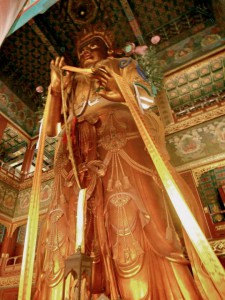
As you ascend the long staircase towards it, more and more of it is revealed with each step, little by little. And the closer you get the more detail you see. The details are intricate and they are bound to have meaning.
Such is the case with most of the works from this part of the world that I’ve studied at the Rubin and now in China. In the great Tibetan Llama Temple in Beijing, I was able to identify the Shakyamuni Buddha’s journey in a particularly intricate mural. There too, I saw images from all schools of Buddhism: everything from Tantric deities to Mahayana boddhisatvas.



